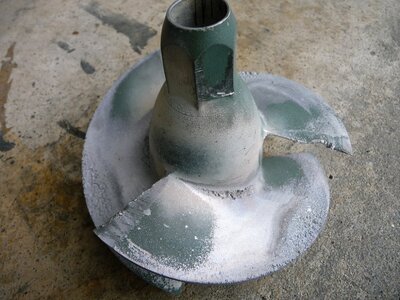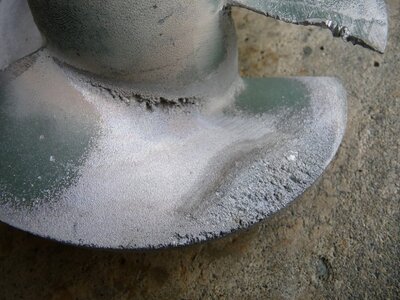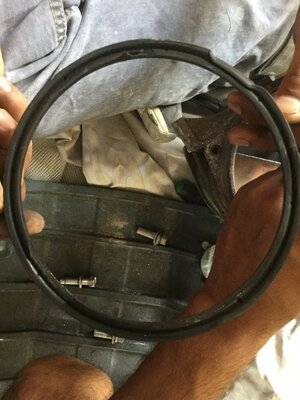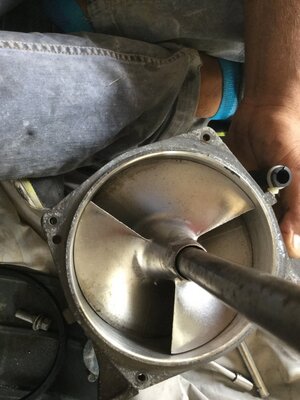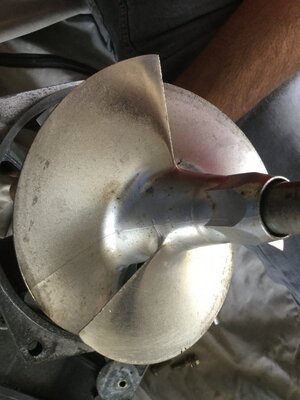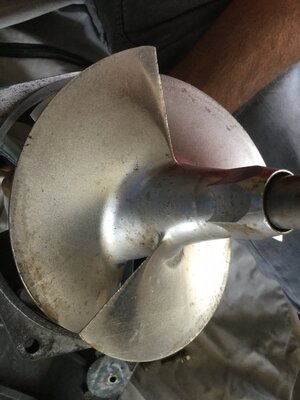Hi, I just recently began restoring a neglected blaster and I have run into a problem with the ski. The ski has no low end power, for example after a 180, the ski doesn't jump out of the water or raise its nose like my other stock blaster but just makes a weird "buzzing" noise and moves really slowly, even under full throttle. I have to hold or butterfly the throttle to get the ski to start moving and speed up. Strangely, after getting the ski on a plain, the engine feels normal and has some mid to top end power and pull. Not sure why the ski doesn't have any low end power. The ski is all stock except it was bored to 760 and it had 760 sized Yamaha Pistons installed. I have tried tuning the carb but that hasn't made much of a difference. Anyone encounter this issue before? Any ideas on what the problem could be and what causes it? Thank you
You are using an out of date browser. It may not display this or other websites correctly.
You should upgrade or use an alternative browser.
You should upgrade or use an alternative browser.
Waveblaster engine acting up
- Thread starter Sabah
- Start date
Mike W
Infidel
- Location
- North Florida
Did you rebuild the carb(s)?
I had a mechanic go through it and he told me it was fine. Is there any carb parts I should look at again?Did you rebuild the carb(s)?
I had a mechanic go through it and he told me it was fine. Is there any carb parts I should look at again?
Does your mechanic have X-ray vision? How could he look at it and tell the carbs internal condition?
Especially on a neglected ski, carb rebuild would be where I would start. Also changing motor from a 701 to 760 will increase amount of fuel needed.
I mean he went through and disassembled it, he didn't just stare at the carb and say "all's good".Does your mechanic have X-ray vision? How could he look at it and tell the carbs internal condition?
Especially on a neglected ski, carb rebuild would be where I would start. Also changing motor from a 701 to 760 will increase amount of fuel needed.
I guess I should have explained it better, my bad.
Mike W
Infidel
- Location
- North Florida
If it has been sitting up to any length of time the carbs definitely need to be rebuilt. If no one in Kuwait is reputable enough to do the job then I would send them off to be rebuilt. One thing you can do is inspect the internal filters located in the fuel pump side of the carb. I bet your mechanic overlooked those.
I mean he went through and disassembled it, he didn't just stare at the carb and say "all's good".
I guess I should have explained it better, my bad.
Did you rejet or richen adjusters after increasing motor size?
When this occurs, does the engine rev up like normal but the ski barely moves? If so, that means the prop is cavitating. Have you checked the condition of the wear ring and impeller? Clearance from the impeller to the wear ring should be no larger than .5mm or .02". Also check the condition of the pump seal.
When this occurs, does the engine rev up like normal but the ski barely moves? If so, that means the prop is cavitating. Have you checked the condition of the wear ring and impeller? Clearance from the impeller to the wear ring should be no larger than .5mm or .02". Also check the condition of the pump seal.
Did you rejet or richen adjusters after increasing motor size?
I am saving these ideas. I have a spare 701 carb for a waveblaster that ran good last time I used it so I will swap it in place of the existing carb and try the ski. I'll also try rejet or richen the adjusters to see if it makes a difference. The pump was what I thought the problem was but it doesn't vibrate or feel damaged. I'll keep you updated on what happens with the ski tomorrow. Thanks for all the help.If it has been sitting up to any length of time the carbs definitely need to be rebuilt. If no one in Kuwait is reputable enough to do the job then I would send them off to be rebuilt. One thing you can do is inspect the internal filters located in the fuel pump side of the carb. I bet your mechanic overlooked those.
A pump won't vibrate or feel damaged when it's cavitating. It basically feels like a clutch slipping in car. The engine revs, but you don't get much thrust or movement. You want your pump to be pulling in nothing but water. If air is introduced into the pump area (from a bad pump seal, cracked pump shoe, or other issue) it will struggle to provide thrust especially at slow speeds and stops. Once you are moving, water is being forced into the jet pump intake tract, so the issue tends to go away or become much less noticeable.
I installed a scoop grate on my blaster which ended up cracking the stock pump shoe. I would have to rev the crap out of the ski to get it moving. Once I hit 10mph or so and water started be forced into the pump, it would take off and run fine until I slowed down again. I replaced the pump shoe but later I started having problems with the pump cavitating when doing 360's. Turned out my pump seal was shot. The cavitation caused by the bad seal was significantly less than when the pump shoe was cracked, but the the bad seal would let just enough air into the pump area to cause problems.
If I was you, before you start swapping carbs and changing jets, pull your ride plate and look the the pump seal and pump shoe. Better yet, pull the pump entirely. Its a 30 minute job for a first timer and you'll be able to inspect it much better. Take a feeler gauge and measure the gap between the prop and wear ring, again it should be less than .5mm or .02" If that all checks out, then move onto the carbs.
I installed a scoop grate on my blaster which ended up cracking the stock pump shoe. I would have to rev the crap out of the ski to get it moving. Once I hit 10mph or so and water started be forced into the pump, it would take off and run fine until I slowed down again. I replaced the pump shoe but later I started having problems with the pump cavitating when doing 360's. Turned out my pump seal was shot. The cavitation caused by the bad seal was significantly less than when the pump shoe was cracked, but the the bad seal would let just enough air into the pump area to cause problems.
If I was you, before you start swapping carbs and changing jets, pull your ride plate and look the the pump seal and pump shoe. Better yet, pull the pump entirely. Its a 30 minute job for a first timer and you'll be able to inspect it much better. Take a feeler gauge and measure the gap between the prop and wear ring, again it should be less than .5mm or .02" If that all checks out, then move onto the carbs.
I feel your description matches what I am experiencing perfectly. Thank you.A pump won't vibrate or feel damaged when it's cavitating. It basically feels like a clutch slipping in car. The engine revs, but you don't get much thrust or movement. You want your pump to be pulling in nothing but water. If air is introduced into the pump area (from a bad pump seal, cracked pump shoe, or other issue) it will struggle to provide thrust especially at slow speeds and stops. Once you are moving, water is being forced into the jet pump intake tract, so the issue tends to go away or become much less noticeable.
I installed a scoop grate on my blaster which ended up cracking the stock pump shoe. I would have to rev the crap out of the ski to get it moving. Once I hit 10mph or so and water started be forced into the pump, it would take off and run fine until I slowed down again. I replaced the pump shoe but later I started having problems with the pump cavitating when doing 360's. Turned out my pump seal was shot. The cavitation caused by the bad seal was significantly less than when the pump shoe was cracked, but the the bad seal would let just enough air into the pump area to cause problems.
If I was you, before you start swapping carbs and changing jets, pull your ride plate and look the the pump seal and pump shoe. Better yet, pull the pump entirely. Its a 30 minute job for a first timer and you'll be able to inspect it much better. Take a ************ gauge and measure the gap between the prop and wear ring, again it should be less than .5mm or .02" If that all checks out, then move onto the carbs.
- Location
- Ontario, Canada
A pump won't vibrate or feel damaged when it's cavitating. It basically feels like a clutch slipping in car. The engine revs, but you don't get much thrust or movement. You want your pump to be pulling in nothing but water. If air is introduced into the pump area (from a bad pump seal, cracked pump shoe, or other issue) it will struggle to provide thrust especially at slow speeds and stops. Once you are moving, water is being forced into the jet pump intake tract, so the issue tends to go away or become much less noticeable.
I installed a scoop grate on my blaster which ended up cracking the stock pump shoe. I would have to rev the crap out of the ski to get it moving. Once I hit 10mph or so and water started be forced into the pump, it would take off and run fine until I slowed down again. I replaced the pump shoe but later I started having problems with the pump cavitating when doing 360's. Turned out my pump seal was shot. The cavitation caused by the bad seal was significantly less than when the pump shoe was cracked, but the the bad seal would let just enough air into the pump area to cause problems.
If I was you, before you start swapping carbs and changing jets, pull your ride plate and look the the pump seal and pump shoe. Better yet, pull the pump entirely. Its a 30 minute job for a first timer and you'll be able to inspect it much better. Take a ************ gauge and measure the gap between the prop and wear ring, again it should be less than .5mm or .02" If that all checks out, then move onto the carbs.
Glad the pump seal suggestion worked out for ya
One other thought to consider is the impeller. If it is a stock aluminum impeller it could be worn down, and the aluminum ones will wear out quickly. But they also have a lot of flex to them so when they wear down, and the blades get a little thinner this will only amplify what already is a poor component. The stock aluminum impellers were adequate at best, but by no means good performers. If you look at the impeller blades where they meet the hub and see a lot of pitting, on the aluminum ones mind you, that means the impeller has been experiencing electrolysis. This will deteriorate aluminum fairly quickly. Once it gets to that point the impeller is pretty well exhausted beyond its usability and needs to be replaced. These 2 photos are of my stock impeller when I removed it to install the Hooker. Notice how aggressively pitted it is all over...that is the result of severe electrolysis. Salt water will amplify this effect.
Attachments
Glad the pump seal suggestion worked out for ya
One other thought to consider is the impeller. If it is a stock aluminum impeller it could be worn down, and the aluminum ones will wear out quickly. But they also have a lot of flex to them so when they wear down, and the blades get a little thinner this will only amplify what already is a poor component. The stock aluminum impellers were adequate at best, but by no means good performers. If you look at the impeller blades where they meet the hub and see a lot of pitting, on the aluminum ones mind you, that means the impeller has been experiencing electrolysis. This will deteriorate aluminum fairly quickly. Once it gets to that point the impeller is pretty well exhausted beyond its usability and needs to be replaced. These 2 photos are of my stock impeller when I removed it to install the Hooker. Notice how aggressively pitted it is all over...that is the result of severe electrolysis. Salt water will amplify this effect.
That problem is on my superjet. Put a new seal on that and swapped wear rings. I'll test it weekend and report back on that thread.
I'm gonna tear out my pump tomorrow and I will update this thread with pics on what I find.Glad the pump seal suggestion worked out for ya
One other thought to consider is the impeller. If it is a stock aluminum impeller it could be worn down, and the aluminum ones will wear out quickly. But they also have a lot of flex to them so when they wear down, and the blades get a little thinner this will only amplify what already is a poor component. The stock aluminum impellers were adequate at best, but by no means good performers. If you look at the impeller blades where they meet the hub and see a lot of pitting, on the aluminum ones mind you, that means the impeller has been experiencing electrolysis. This will deteriorate aluminum fairly quickly. Once it gets to that point the impeller is pretty well exhausted beyond its usability and needs to be replaced. These 2 photos are of my stock impeller when I removed it to install the Hooker. Notice how aggressively pitted it is all over...that is the result of severe electrolysis. Salt water will amplify this effect.
I pulled my pump out today and I took pics of the different parts. Do they look good or are they in need of replacement ? Thank you.Glad the pump seal suggestion worked out for ya
One other thought to consider is the impeller. If it is a stock aluminum impeller it could be worn down, and the aluminum ones will wear out quickly. But they also have a lot of flex to them so when they wear down, and the blades get a little thinner this will only amplify what already is a poor component. The stock aluminum impellers were adequate at best, but by no means good performers. If you look at the impeller blades where they meet the hub and see a lot of pitting, on the aluminum ones mind you, that means the impeller has been experiencing electrolysis. This will deteriorate aluminum fairly quickly. Once it gets to that point the impeller is pretty well exhausted beyond its usability and needs to be replaced. These 2 photos are of my stock impeller when I removed it to install the Hooker. Notice how aggressively pitted it is all over...that is the result of severe electrolysis. Salt water will amplify this effect.
Attachments
- Location
- Ontario, Canada
The impeller appears to be fine, and although the photo is not really something to go by for gauging clearance, it appears to look decently snug in there. But it does appear that your seal is quite well compressed, since you have it out now anyway it would be a good idea to change it, they are not expensive either...in the $20 range. The top left spot just past where the square indentation is looks to be missing some rubber, but that indentation alone suggests that it is well compressed and probably beyond its usefulness now. When you install a new one you will find it to be a bit of a chore to compress and set the pump back onto the alignment pins, that means the pump is getting a good seal. If you were to re-install this one it will most likely slide right into place without hesitation, if it is too easy like that, then it is most likely spent.
I just replaced the wear ring and reassembled the pump and the ski actually runs like it should now! Thanks for the help, really appreciate it.The impeller appears to be fine, and although the photo is not really something to go by for gauging clearance, it appears to look decently snug in there. But it does appear that your seal is quite well compressed, since you have it out now anyway it would be a good idea to change it, they are not expensive either...in the $20 range. The top left spot just past where the square indentation is looks to be missing some rubber, but that indentation alone suggests that it is well compressed and probably beyond its usefulness now. When you install a new one you will find it to be a bit of a chore to compress and set the pump back onto the alignment pins, that means the pump is getting a good seal. If you were to re-install this one it will most likely slide right into place without hesitation, if it is too easy like that, then it is most likely spent.
I just replaced the wear ring and reassembled the pump and the ski actually runs like it should now! Thanks for the help, really appreciate it.
Awesome man. Feels nice to figure out a problem and fix it on your own eh?
Definitely, I just rebuilt the engine on that blaster as well as replaced all the worn out wiring and hoses and I was annoyed that the ski had absolutely no low end power. It really took most of the fun from riding the blaster. I'm glad that the issue was a quick fix and that I didn't need to tear the ski apart.Awesome man. Feels nice to figure out a problem and fix it on your own eh?

